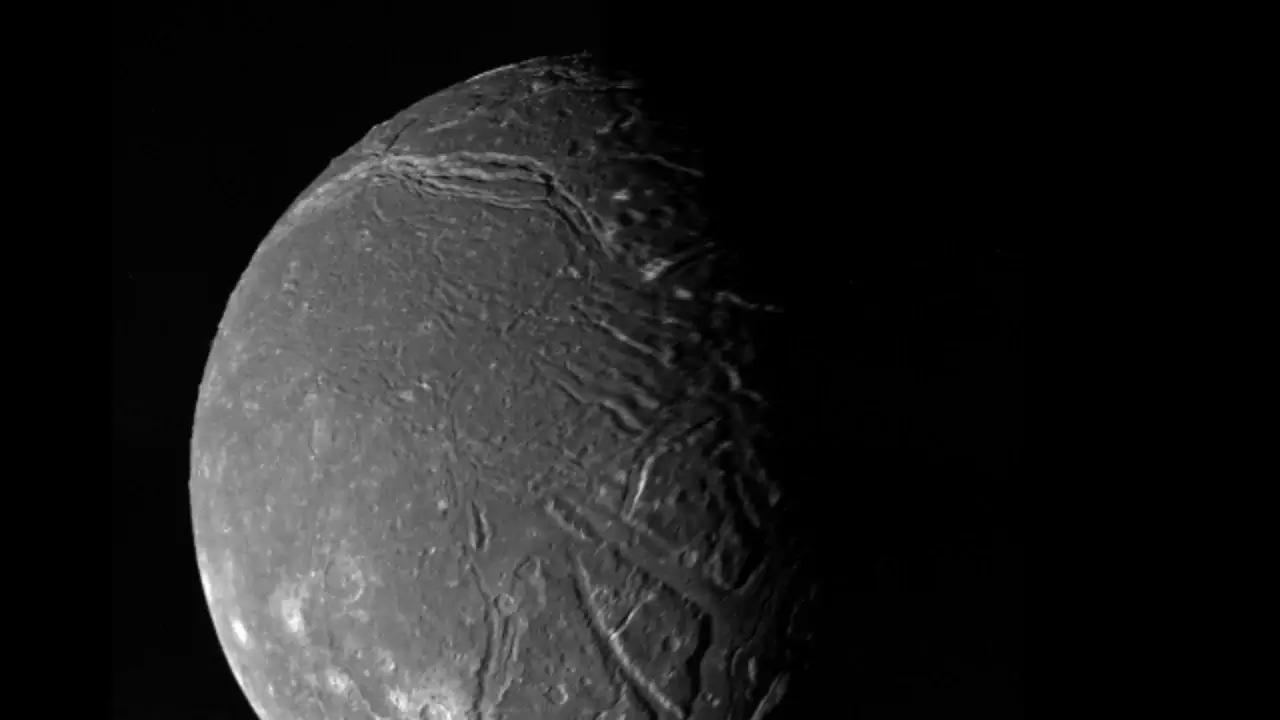
New information has emerged about the possibility of liquid water under the ice cover on Uranus's Ariel satellite. According to research conducted by scientists, the ocean here is likely to be tens of times deeper than the Earth's Pacific Ocean. The details of this research were published in the international journal "Icarus."
Ariel is Uranus's brightest and fourth-largest satellite. Its surface is covered with ancient craters, and some areas have a relatively newer structure. Experts suggest that these changes may have been caused by glacial volcanic eruptions. Also, various cracks, ridges, and grabens on the surface of the satellite show the influence of internal pressure and external stresses.
Experts came to a series of conclusions by comparing the wave voltage models arising from Ariel's orbital motion with surface geological maps. It turns out that in the past, the satellite's orbital eccentricity was about 40 times higher than it is now. This means that if there was an ocean under the ice, its pressure could deform the surface and create large cracks.
According to calculations, the ocean depth in Ariel could reach 170 kilometers. For comparison, the average depth of the Earth's Pacific Ocean is only 4 kilometers. Such indicators make Ariel one of the most unique satellites in the Solar System.
Additionally, this group of researchers had previously suggested that there might be underglacial oceans on another of Uranus's satellites - Miranda. According to Tom Nordheim, one of the scientists at Johns Hopkins University's Applied Physics Laboratory:
"We are finding more and more evidence indicating the existence of global oceans in the Uranus system. This expands our understanding of water resources in the solar system."
So far, humans have only been able to observe the southern hemispheres of Ariel and Miranda. Future special missions are expected to confirm the actual existence of oceans on these satellites and allow for the study of their evolutionary processes.
As a reminder, it was recently reported that traces of an ancient river stretching up to 15,000 kilometers were discovered on the planet Mars. These findings further enrich humanity's knowledge of space and water resources.
Read “Zamin” on Telegram!Users of Меҳмон are not allowed to comment this publication.





















